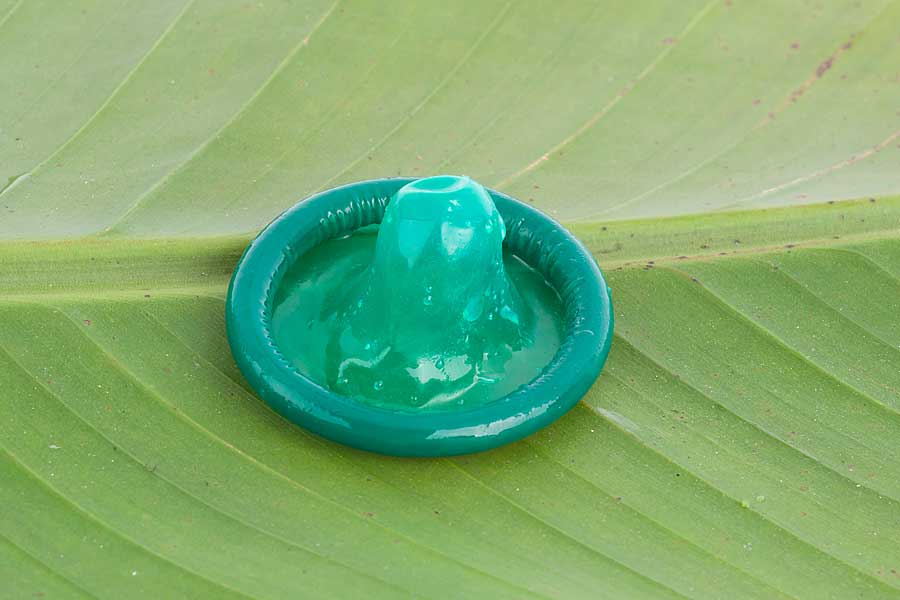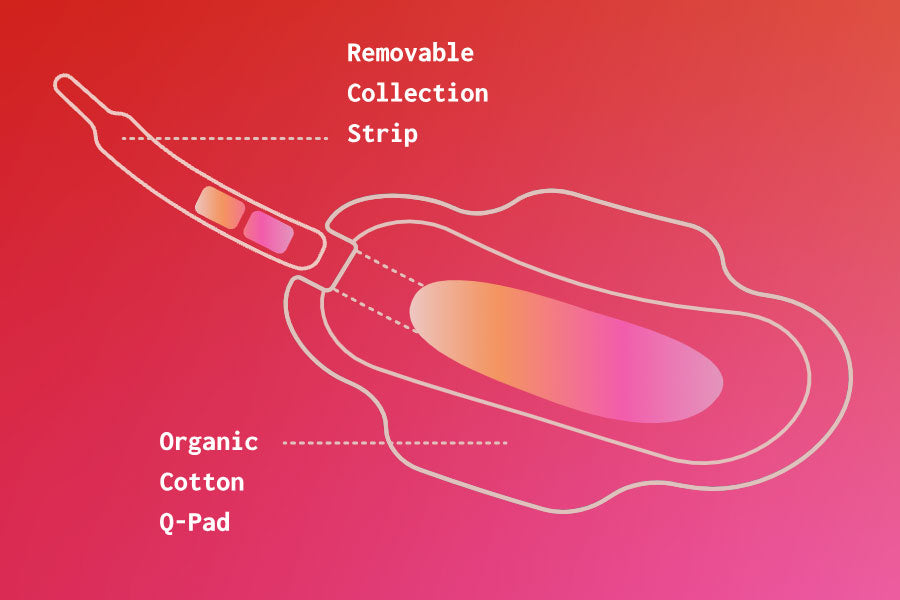Trusted for 25+ Years
Eco-Friendly Condoms

Dr. Lisa Lawless, CEO of Holistic Wisdom
Clinical Psychotherapist: Relationship & Sexual Health Expert
 Condom Recycling
Condom Recycling
One of the most common things environmentally conscientious people want to know about condoms is if there are any eco-friendly condoms. As they certainly contribute to how big an ecological footprint you are leaving, we will review a few different types of condoms to help you choose what is best for you and the environment.
Recycling Latex Condoms
Most condoms are currently made from latex. When using them, one thing to keep in mind is that latex condoms can only be used with water-based, aloe-based, and silicone lubricants. Do not use oil-based lubricants, as the oil will break down the latex and destroy the protective nature of the condom. This is also important to note when using sex toys made from latex as the chemical reaction from oils can break down the toy and leach chemicals into your bloodstream when inserted into your body.
Regarding their ecological footprint, there is still controversy about whether latex condoms are biodegradable and what effects additives and lubricants have on their biodegradability. Latex is biodegradable as it is an all-natural substance made from the sap of rubber trees. However, latex condoms are not composed of 100% latex, and they do not biodegrade when they are in water, which is why it is not good to flush your used condoms. Used latex condoms are best sent to landfills as flushing condoms down the toilets clogs pipes, treatment plants, and rivers. No one has taken up recycling these items because they are a biohazard, so don't throw them in the recycling bin.
Contrary to popular belief, the notion that LELO HEX Condoms are recyclable is a misconception. It is imperative to set the record straight and not succumb to the disingenuous tactics employed by some unscrupulous sex toy retailers claiming they are in order to promote them.
Recycling Polyurethane Condoms
People who have allergic reactions to latex can use polyurethane condoms made of a type of soft plastic created by Durex Avanti in the 1990s. They are thinner than latex condoms and more expensive. You can use oil, water, and aloe-based lubricants with them. However, these condoms will not biodegrade and are a lesser eco-friendly option. If you use these, please read our guide, The Myth About Polyurethane Condoms & Lubricants.
Recycling Polyisoprene Condoms
Polyisoprene condoms were approved in 2008 and are made from a new latex formula that those with latex allergies can use. They are synthetic latex that does not contain the natural proteins which are the source of latex allergies. It is also a thinner form of latex than traditional latex condoms but thicker than polyurethane condoms. They are more expensive than conventional latex condoms but less expensive than polyurethane condoms. They are more form-fitting and stretchy than polyurethane condoms. Like traditional latex condoms, polyisoprene condoms can not be used with oil-based lubricants. Unfortunately, like polyurethane condoms, they are not biodegradable.
Recycling Lambskin Condoms
Natural membrane, lambskin, or sheepskin condoms are made from the intestinal lining of sheep or lambs. This is the oldest type of condom still being used today. The natural membrane is somewhat porous and is therefore not recommended for protection against certain STDs. This type does, however, protect against pregnancy and bacterial STIs. Some users find these condoms to be more comfortable than latex ones. They have a strong odor that some find a bit overwhelming compared to latex or polyurethane and are the most expensive condoms currently available. These are biodegradable condoms which makes them an environmentally conscientious choice.
Recycling Silicone Coated Condoms
Many people are under the impression that a silicone-coated condom has a solid silicone layer over latex, polyurethane, or polyisoprene. This is an incorrect assumption. A silicone-coated condom is nothing more than a pre-lubricated condom made out of latex or polyurethane and has silicone lubricant used to lubricate it.
Recycling Silicone Condoms
There is only one silicone condom (Origami Condoms), and it is still being reviewed for approval by the FDA. It was supposed to be released in 2014 and appeared as though it would revolutionize the entire condom industry with its unique designs, but there were financial issues and other delays, so it has not entered the market. The ability to recycle is yet to be determined, as is the ability to reuse it.
No Recycling for Condoms Outer Wrapping
The plastic and foil wrappers that latex condoms are packaged in are also not biodegradable, and this should be considered. It would be excellent if consumers could pressure condom companies into making more eco-friendly wrapping for their products.
Recycling With Lubricants & Spermicides
Lubricants and spermicides are often coated on condoms and referred to as pre-lubricated. At this time, it is unclear how this may alter the decomposition of a condom. Currently, no studies show how long it takes condoms, lubricated or not, to break down. Regardless of condom biodegradability, most landfills are over-capacity and do not provide the ideal environment nor the main ingredient of air necessary for effective decomposition.
One thing to explore is the lubricants that your condoms come pre-lubricated with, as some can contain possible toxins. Examples of controversial toxins are parabens. See more regarding parabens through our guide: Paraben-Free Lubricants.
Recycling Birth Control Alternatives
Condoms are an effective form of contraception and STI, STD protection; however, there are other options if you're worried about accumulating extra trash. If you and your significant other are both monogamous and have tested negative for STDs, you might want to consider a birth control method that produces less waste. However, make sure to research the birth control method you choose, as you may be surprised by some of the health issues that can arise from using specific birth control methods. The most important thing is to be an empowered consumer of these products, armed with education regarding their effect on your body and, your home, the earth. For more information on birth control alternatives, please see our: Birth Control Guide.
In Closing
There are new developments occurring in the world of condoms to make them safer, more comfortable as well as eco-friendly. Make sure to check out our guide New Condoms: Latest Developments.



 Condom Recycling
Condom Recycling

